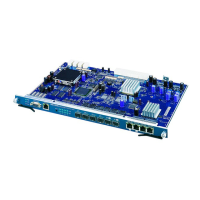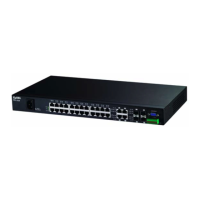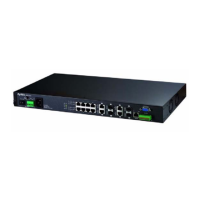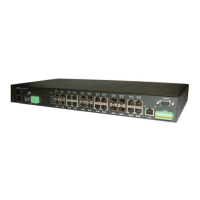Chapter 30 profile Commands
Management Switch Card User’s Guide
870
The alarmprofile set command configures ADSL port alarm thresholds. The system sends an
alarm trap and generates a syslog entry when the thresholds of the alarm profile are exceeded.
Configure
alarmadsl profiles first and then use the port adsl alarmprof command to use
them with specific ADSL ports.
The following example sets an alarm profile named SESalarm that has the system send an alarm
trap and generate a syslog whenever the atuc connection (from the IES to the subscriber) has more
than 3 severely errored seconds within a 15 minute period.
30.6.3 profile alarmadsl delete Command
Syntax:
profile alarmadsl delete <profile>
where
This command allows you to delete an individual ADSL alarm profile by its name. You cannot delete
the DEFVAL alarm profile.
The following example deletes the SESalarm alarm profile.
<ess>
=
The number of Errored SecondS (0~900) that are permitted to occur within 15
minutes.
<ffr>
=
The number of Failed Fast Retrain seconds (0~900) that are permitted to occur
within 15 minutes.
<sesl>
=
The number of Severely Errored Seconds (0~900) that are permitted to occur within
15 minutes.
<uasl>
=
The number of UnAvailable Seconds (0~900) that are permitted to occur within 15
minutes.
<fru>
=
A rate in kilobits per second (Kbps). If a fast mode connection’s upstream
transmission rate increases by more than this number, then a trap is sent.
<iru>
=
A rate in kilobits per second (Kbps). If an interleave mode connection’s upstream
transmission rate increases by more than this number, then a trap is sent.
<frd>
=
A rate in kilobits per second (Kbps). If a fast mode connection’s downstream
transmission rate decreases by more than this number, then a trap is sent.
<ird>
=
A rate in kilobits per second (Kbps). If an interleave mode connection’s downstream
transmission rate decreases by more than this number, then a trap is sent.
<ift>
=
“1” sets the profile to trigger an alarm for an initialization failure trap. “0” sets the
profile to not trigger an alarm for an initialization failure trap.
ras> profile alarmadsl set SESalarm atuc ses 3
<profile>
=
The name of an alarm profile.
ras> profile alarmadsl delete SESalarm

